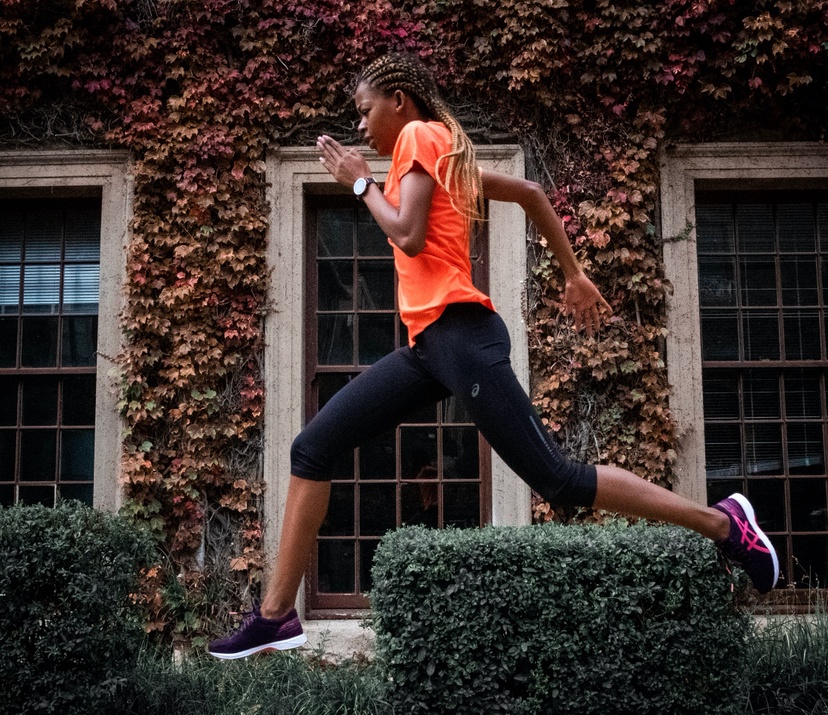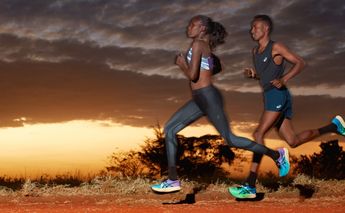You don’t hear too much about hip injuries when it comes to running, with knee and ankle injuries far more likely to come to mind in terms of the lower extremities. “Advancement in medical technology, however, has raised an awareness of hip related running injuries,” explains Sports Scientist Chérien Roux.
According to Roux, a recent survey in America found that as much as 10% of runners reporting lower extremity pain was due to hip pain. The survey identified female marathon runners as being especially vulnerable to hip injuries.
“Many runners still believe in only ‘running’ for their running training and ignore the benefits of resistance and strength work,” Roux says. “Those who do include strength training in their routines often omit hip exercises from their routines too.”
To help prevent hip injuries, Roux recommends doing specific resistance training exercises at least two or three times a week.
Here is what you can do as part of prehabilitation:
Perform dynamic stretching before every run. Examples include:
- Backward leg swing.
- Forward leg swing.
- Side leg swing.
*More on stretching (and when to do it, here)

Clam:
- Lie on the floor on your side (does not matter what side you would like to start).
- Bent your knees 90°.
- Place the resistance band so that is positioned above your knees.
- Open and close your legs.
- Perform 3 sets of 15-20 reps on each side (4).
One-leg bridge with resistance band:
- Lie on your back on the floor.
- Bend your knees like when you will do a normal bridge.
- Place the resistance band so that it is positioned above your knees.
- Lift your buttocks & leg up, while keeping the other leg bend and on the ground.
- Perform 3 sets of 15-20 reps on each side (4).
Monster walks with resistance band:
- Place the resistance band so that it is positioned above your knees.
- Place both feet shoulder width apart, and bend your knees about 30° as if you were to do a squat.
- Step with the right leg while you are in the semi-squat position and then step with the left leg.
- Perform this movement for 10 steps then change and do the left side.
- In total do 3 sets of 10 steps to each side.
*All of these exercises can be done at home with any type of resistance band.
Some more strength training inspiration, here.

Now, if you don’t add those to your routine, you risk this list of (and we’re about to get super technical with Roux here) common hip injuries:
Trochanteric Bursitis/ Gluteal Tendinopathy:
The trochanter is a bony point of the femur at the side of the hip with a fluid-filled sac called the bursa. Overuse aggravates the bursa due to excess friction, causing Inflammation (2). Another cause is repetitive stress placed on the gluteal tendon as a result of the force absorbed by muscles from the feet's impact with the ground (another reason to run with the correct shoes).
Common symptoms:
- Tenderness on the upper part of your thigh.
- Swelling around this area.
- Burning sensation at the top of the thigh.
- Tenderness on the side of the hip.
As soon as you start feeling these sensations rather RICE (Rest, Ice, Compress, Elevate) and if the pain doesn't go away, seek medical attention.
Hip Labral Tears and Femoroacetabular Impingement (FAI):
The diagnosis of hip labral tears is becoming more common in athletes. The hip joint is called the ball-and-socket joint. The ball is the head of the femur and the socket is part of the hip called the acetabulum. The labrum is a hard, flexible cartilage situated between the hip joint. The labrum stabilizes the hip and the joint , and helps provide full range of motion. FAI occurs when the femur bone rubs against the rim of the acetabulum causing friction. FAI may also cause a labral tear (2).
Signs and symptoms:
- A pinch feeling when extending or flexing your leg.
- A clicking sound as soon as you flex and then extend your leg.
- It is uncomfortable to do any types of rotations with your leg.
- Pain in the groin area.
Unfortunately, the only way to diagnose labral tears is with a MRI and treatment requires surgery by an orthopaedic surgeon. Luckily due to medical technology labrum tears can be fixed with laptroscopical surgery. The procedure includes dislocating the hip joint to make access to the labrum possible. Recovery depends on the extent of the injury, but expect walking with crutches for up to six weeks. Rehabilitation should include physiotherapy once week and rehabilitation exercises at least three times a week.
Groin Strain:
Groin strains are common among runners and can also cause pain in the hip area. Most groin strains are only minor tears of the muscle fibres and it is classified as the overstretching or tearing of the adductor muscles.
Signs and Symptoms:
- Swelling around the groin area.
- There may be bruising.
- It will be painful to use your leg against resistance.
- Mild to severe pain at the top of your inner thigh (1).
Depending on the severity of the strain it can take up to 6 months to heal, but in most cases it only takes up to 6 weeks to heal. RICE (Rest, Ice, Compress, Elevate) is important, but seek medical attention to confirm the diagnosis when in doubt (2).
Deep Gluteal Syndrome:
Deep gluteal syndrome causes pain in the buttocks, but it is caused by the hip trapping the sciatic nerve. This injury is prevalent among runners who increased their running intensity or duration, and people who sit for extended periods of a time during the day (3).
Signs and Symptoms:
- Pain that is experienced deep within the buttock.
- Cramping at the back of the thigh.
- Lower back pain (2).
Deep gluteal syndrome can easily be overcome by decreasing your time spent sitting and performing both static and dynamic stretching to increase your hips' range of motion. Furthermore, doing resistance exercises that targets the hip abductors can also help.
Want to learn more about recovering from a running-related injury? Click here.
References
1. Callahan, Lisa R. Overview of running injuries of the lower extremity. UptoDate. [Online] 05 2020, 28. [Cited: 07 2020, 28.] Literature Review.
2. British Medical Association. The BMA guide to Sport Injuries. [ed.] Dr Michael Peters, et al. London : Penguin Random House (DK), 2010. p. 272.
3. Napier, Chris. Science of Running. [ed.] Megan Lea and Alastair Laing. London : Penguin Random House (DK), 2020. p. 224. Vol. 1.
4. Goller & Kok Physiotherapy. Hip Strengthning. Recovery Plan. [Document]. Pretoria, Gauteng, South Africa : s.n., 03 2019. p. 2.



